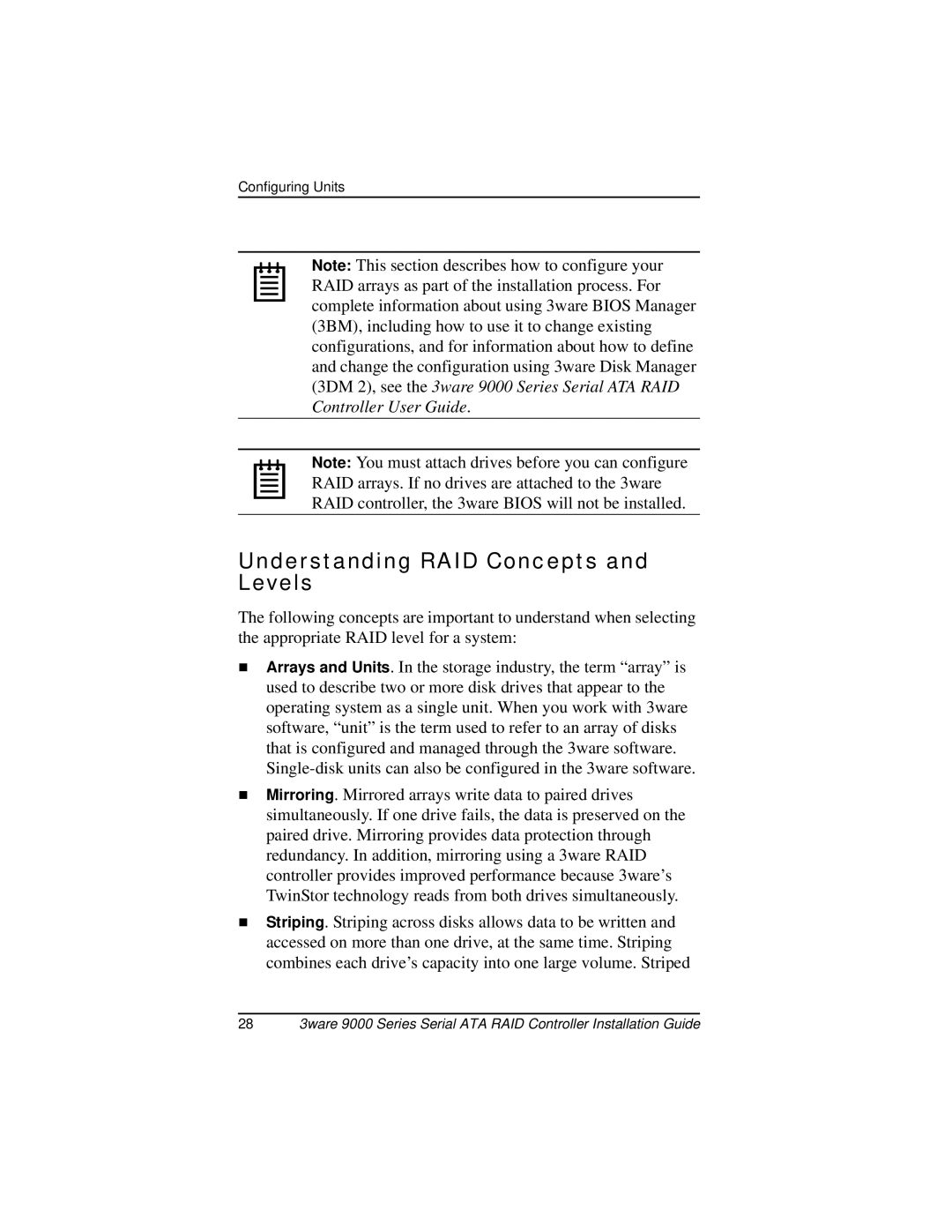
Configuring Units
Note: This section describes how to configure your RAID arrays as part of the installation process. For complete information about using 3ware BIOS Manager (3BM), including how to use it to change existing configurations, and for information about how to define and change the configuration using 3ware Disk Manager (3DM 2), see the 3ware 9000 Series Serial ATA RAID Controller User Guide.
Note: You must attach drives before you can configure RAID arrays. If no drives are attached to the 3ware RAID controller, the 3ware BIOS will not be installed.
Understanding RAID Concepts and Levels
The following concepts are important to understand when selecting the appropriate RAID level for a system:
Arrays and Units. In the storage industry, the term “array” is used to describe two or more disk drives that appear to the operating system as a single unit. When you work with 3ware software, “unit” is the term used to refer to an array of disks that is configured and managed through the 3ware software.
Mirroring. Mirrored arrays write data to paired drives simultaneously. If one drive fails, the data is preserved on the paired drive. Mirroring provides data protection through redundancy. In addition, mirroring using a 3ware RAID controller provides improved performance because 3ware’s TwinStor technology reads from both drives simultaneously.
Striping. Striping across disks allows data to be written and accessed on more than one drive, at the same time. Striping combines each drive’s capacity into one large volume. Striped
283ware 9000 Series Serial ATA RAID Controller Installation Guide
